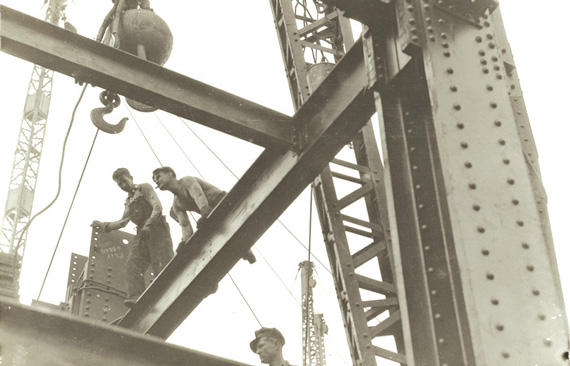Trending
This month in real estate history
This month in real estate history

1929: Builders Win Right to Five-Day Workweek
After threatening a strike that would result in a lockout of 60,000 building trades workers, the city’s construction industry won the right to a five-day workweek 87 years ago this month. The agreement between the Building Trades Employers’ Association and the Building Trades Council of New York City placed approximately 115,000 unionized carpenters, bricklayers, plasterers, painters, plumbers and electricians on a five-day schedule. The trade union’s victory was described by the New York Times as “the biggest gain yet made by the five-day-week movement.” At the time, in the U.S., only approximately 500,000 employees, including those at Ford’s auto plants in Detroit, worked five days a week. Under the new agreement, the weekly pay for workers was effectively the same, but those who labored on Saturdays would be paid overtime. “It’s the five-day week that labor is looking for,” said C.G. Norman, chairman of the board of governors of the Building Trades Employers’ Association. “It is not to be used merely as a pretext for making more money.”

Battery Park City
1981: Developers Tapped for Battery Park City
As part of a bold initiative to create a new neighborhood on a man-made landfill on the southwestern tip of Manhattan, the city picked six developers to erect 1,809 units of housing on a nine-acre site in Battery Park City 35 years ago this month. The Battery Park City Authority’s selections, which included Rockrose Development Corporation, a firm known at the time for industrial-to-residential conversions, signaled a break with urban-renewal doctrines that typically called for conformity, according to the New York Times. “Variety is purposely sought to avoid any appearance of a ‘project’ look or superblocks,” stated the building guidelines. A previous 1969 master plan had called for mega-complexes. The emphasis now was on creating traditional street grids with a mix of townhouses, low-rise apartment buildings and high-rise towers. City planners also stipulated that one-third of the site should remain open space in perpetuity. In 2010, The Urban Land Institute credited the neighborhood’s master plan with aiding in the “rebirth of Lower Manhattan.”
2007: Hotel ‘Queen’ Leona Helmsley Dies

Leona Hemsley
Leona Helmsley, the infamous “Queen of Mean” hotel owner who was convicted of tax evasion and fraud in 1989, died nine years ago this month. Beginning in the 1980s, Helmsley developed and ran hotels with her husband, New York real estate titan Harry B. Helmsley. She managed a chain of 30 hotels, including four in New York City, and became famous for ads in which she appeared, with taglines like, “The only palace in the world where the queen stands guard.” In 1987, the New York Post published a series of articles alleging that she and her husband evaded paying income tax by claiming the cost of remodeling their 28-room Greenwich, Connecticut, mansion as a business expense. Her husband was found unfit for trial, but she was ultimately convicted and spent 18 months in federal prison. Amid the explosive testimony was a statement that she had once made to her housekeeper: “Only the little people pay taxes.” After her husband died, in 1997, Helmsley sold her real estate holdings and receded from the limelight. But reports of her spitefulness lived on after her death. In her will, she bequeathed $12 million to her dog, a white Maltese named Trouble, while excluding two of her grandchildren.




